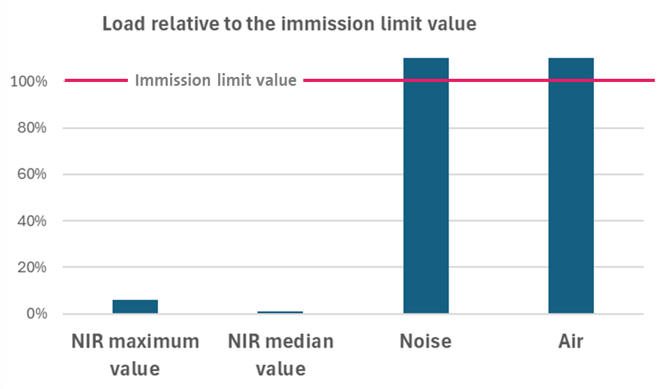The extremely low exposure levels in Switzerland are attributable to the Swiss Finish. As a precaution, an installation limit value of 5 V/m is ten times stricter at ‘places of sensitive use’, such as homes, offices or schools The recently measured values show that the levels are not even anywhere near the installation limit value, since the peak level measured at schools was just 0.43 V/m. For comparison: according to the latest scientific findings, non-ionizing radiation only becomes harmful from around 350 V/m. This means that there is a factor of 700 between the measured exposure levels and a possible impact.
This shows that, in addition to the installation limit value, there are many reserves in the implementing provisions of the Ordinance on Protection against Non-Ionizing Radiation (NIRO). These further limit the capacity of antenna installations. As a result, many more antenna sites are required – which are, however, often rejected.

